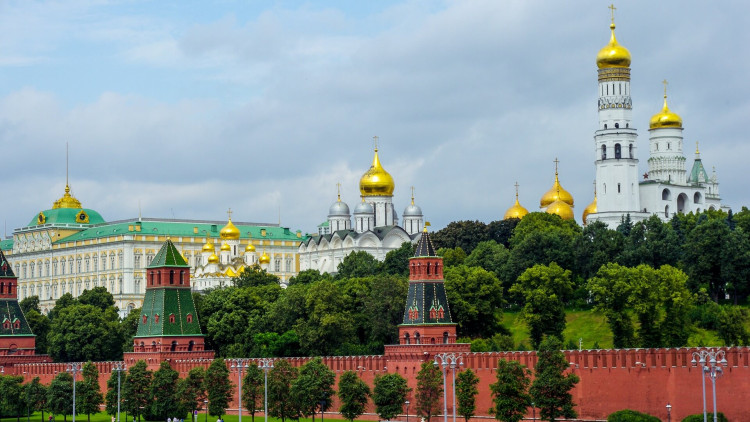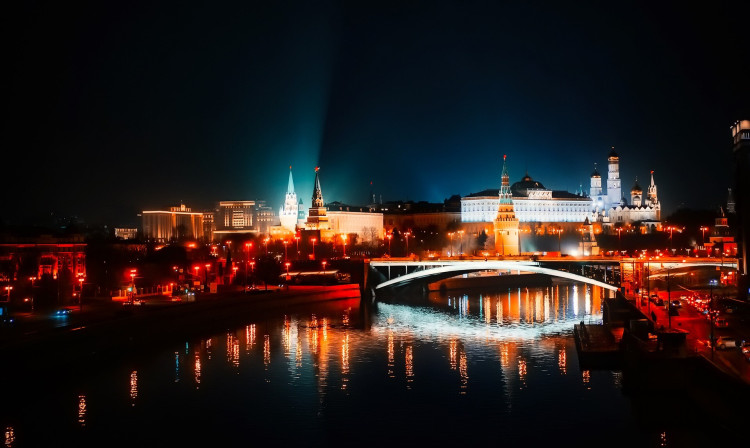Kremlin (Moscow, Russia) - fortified complex on the Red Square
Where is located Kremlin?
Address of Kremlin is Moscow, Russia
show on map
When was built Kremlin?
Built date of Kremlin is 1475 - the beginning of construction

Facts, informations and history of Kremlin
The Kremlin in Moscow is one of the most iconic places in the world. Its impressive walls and towers over the Moscow River, and inside the complex there are palaces, cathedrals and many other monuments. The Kremlin has a long and rich history dating back hundreds of years, and at the same time remains the current center of power in Russia.
The history of the Kremlin dates back to at least the 12th century, when a settlement began to develop on this site. In those days, the Kremlin was the main defensive point, built of wood and surrounded by moats. It was a meeting point of trade routes, which contributed to its development as an administrative center.
In the 14th century, the Kremlin was rebuilt in stone, which significantly strengthened its defenses. It was then that the first stone towers and walls, which are characteristic of the current appearance of the Kremlin, began to be built. During this period, the Kremlin became the seat of Moscow princes and then tsars.
In the times of the Tsars, the Kremlin was a place of great celebrations and ceremonies. Tsars were crowned here, and other important events such as weddings and funerals took place here. In the 16th century, during the reign of Ivan the Terrible, the Kremlin became the center of power in Russia. It was also then that some of the most famous buildings were built, such as the Ivan the Great bell tower.
After the Bolshevik Revolution in 1917, the Kremlin became the seat of the Soviet government. It was here that Lenin and his successors made key decisions regarding the state. During this period, many monuments were destroyed or modernized, but the Kremlin remained the center of power in the USSR until its dissolution in 1991.
After the collapse of the USSR, the Kremlin became the seat of the President of Russia. Currently, it serves both a political and historical function, attracting crowds of tourists from all over the world. Its monumental buildings and fascinating history make it one of the most visited places in Moscow.
The Kremlin is also the site of many important cathedrals and churches. The most famous are the Uspensky Council, the Blagoveshchensky Council and the Arkhangelsk Council. These cathedrals are not only a place of worship, but also constitute important architectural monuments, attracting tourists with their beauty and history.
After the Bolshevik Revolution, the Kremlin became the seat of the Soviet government. During this time, it gained a new use, serving as a center for political and administrative decisions. Many Soviet leaders, such as Lenin and Stalin, had their offices and apartments within the Kremlin.
Currently, the Kremlin is the seat of the President of Russia and his administration. In addition, it is an important landmark for tourists and a place of many cultural events. During national holidays, ceremonial parades and other public events take place here.
The Kremlin walls are 18 meters high and stretch for over half a kilometer. They consist of 20 towers, some of which are topped with soaring turrets. The towers are not only a defensive element, but also play an aesthetic role, adding charm to the entire complex.
There are characteristic red stars on the tops of some Kremlin towers. These stars are a symbol of Soviet power and were installed during the USSR period. They are perfectly visible from various points of Moscow and add a unique charm to the Kremlin complex.
In 1600, under Tsar Boris Godunov, the soaring bell tower, Ivan the Great, 81 meters high, was completed. The watchtower offers a view of the surrounding area in a radius of over 30 km.
Inside the Kremlin, there are many palaces and other monuments. The most important are the Teremny Palace, the Oruzhionnaya Palace Arsenal, the Palace of Congresses, the Palace of the Patriarchs and the fabulous St. Basil's Church. Each of these facilities has its own unique history and architectural style.
One of the most recognizable symbols of the Kremlin is the Tsar Kolokol, the largest bell in the world. It weighs 203 tons and was suspended at the foot of the bell tower of Ivan the Great. Although it has never been used, it is an impressive sight and is one of the most photographed objects in the Kremlin.
The Car-Pushka is a huge cannon, weighing 40 tons and having a caliber of 89 centimeters. Despite its impressive size, it was never used in combat. It is one of the largest cannons in the world and is a popular attraction for tourists.
The Kremlin appears in many films and literary works. It is often used as a background for scenes related to politics or intrigue. In literature, the Kremlin is often presented as a mysterious place full of secrets, which adds romance and mysticism to it.
The Kremlin has also become a symbol of Russia as a state. Its iconic silhouette is recognizable around the world and is often used as a symbol of Russian power. Many people see the Kremlin as the heart of Russia, which highlights its importance in the country's culture and politics.
While visiting the Kremlin, there are many different monuments and attractions worth seeing. In addition to palaces, cathedrals and churches, you can also visit the Krewnia Armory, where there are unique collections of weapons, armor and artifacts related to the history of Russia. You can also visit the Diamond Armory, which contains gems, jewelry and insignia of tsarist power, including the crown of the Russian Empire.
There is a legend that says that the Kremlin once had white walls. The white color symbolized purity and holiness. However, in reality the walls were always made of brick, and the white legend comes from the times when some buildings within the Kremlin were whitewashed with lime, which could give the impression that the entire Kremlin was white.
The Kremlin has long been surrounded by an aura of mystery, and one aspect of this mystery is its alleged secret tunnels and passages. There are many theories about hidden routes underground that were intended to serve as means of escape or hidden corridors for rulers. While most of this is just speculation, some archaeological discoveries suggest that there may indeed have been secret passages.
Construction/building type
Building Kremlin is of type Building complex, Citadel, Fortress
Architectural style
Architectural style of Kremlin is Russian Byzantine
Other dimensions, parameters and frequently asked questions

What area have Kremlin?
Kremlin have area of 28 hectares
What material is the building made of?
Kremlin is made of the following materials: Brick
Other names
The building is also known by other common names or in the original language, i.e. (ros. Кремль)
Is the building on the UNESCO World Heritage List?

The listing took place in the year 1990.
Details of the entry are available on the Unesco website at https://whc.unesco.org/en/list/545/
Official website
The official website of the building, where up-to-date information can be found, is http://www.kreml.ru
Photo gallery Add photo
Location on map / How to get there























Comments to Kremlin (25) Average rating: 4,0 Add comment / Rate building
Based on 25 comments